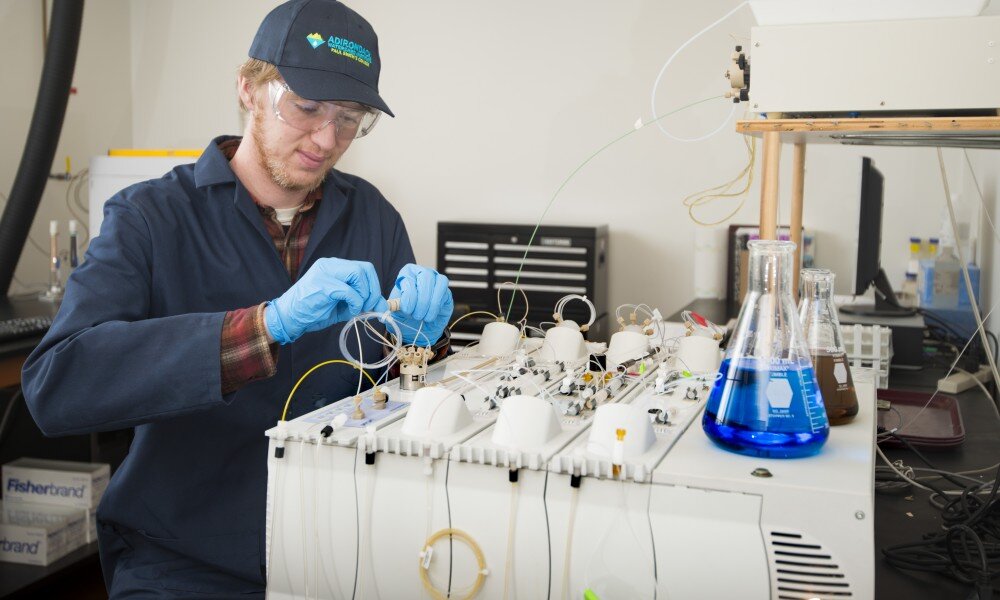Celebrating the 50th Anniversary of the Clean Water Act
This year marks the celebration of the 50th anniversary of the Clean Water Act (CWA)! We hope that you will join us in celebrating this milestone through various programs and events held this year. Events will be held in New York and Vermont to commemorate the legacy of this important legislation. We will be highlighting the 50th anniversary during Adirondack Water Week, August 5th-14th. This week-long collection of events connects both residents and visitors to issues that impact clean water through educational programming, lectures, and community engagement.
The history of the CWA begins with the Federal Water Pollution Control Act (FWPCA) of 1948, regarded as the first law aimed at reducing water pollution. Although the FWPCA created a foundation for federal and state agencies to regulate pollutants, this law was not well-defined and failed to create meaningful change. The following two decades passed without any significant impact on highly polluted U.S. waters. However, many point to the Cuyahoga River fire of 1969 to be the turning point in the nation’s struggle to address clean water. Following the creation of Earth Day and the passing of the Clean Air Act in 1970, pressure mounted to address our nations’ waterways. In an era where two-thirds of the nation’s lakes, rivers, and coastal waters were unsafe for fishing or swimming, passing this legislation was bipartisan. In 1977 the CWA was amended to include parameters to regulate the discharge of untreated wastewater from businesses, municipalities, and industry. Another amendment in 1987 established Section 319 which addresses non-point source pollution. Section 319 offers states, territories, and tribes the funding, training, or logistical support they need to implement non-point source pollution reduction measures.
Here are four facts about the Clean Water Act:
1) The Clean water Act was passed by the federal government, but each state is responsible for enacting it through a Water Quality Standards Program (WQS)
Water Quality Standards are the baseline programs to protect state waters. These programs often include both groundwater and surface water protections through monitoring, regulation, and enforcement. The U.S. EPA is responsible for overseeing each state’s WQS Program. Some states had WQS programs before the Clean Water Act was enacted, including New York.
2) President Nixon vetoed the Clean Water Act
Although there was strong bipartisan support for protecting the nations’ waterways, President Richard Nixon claimed the $24 billion price tag was too high. Following the veto, the Senate voted 52-12 to override, sending the bill to the House of Representatives, who voted 247-23 to override. This vote took place on October 18th, 1972, just one day after the President had vetoed the bill.
3) The intent of the CWA was to protect all water
The CWA states, “The objective of this Act is to restore and maintain the chemical, physical, and biological integrity of the Nation’s waters.” This is achieved by prohibiting the discharge of pollutants into waterways through the National Pollutant Discharge Elimination System (NPDES) program. This program establishes a permit system and discharge limits for point-source pollutants.
4) The Lake Champlain Basin Program was formed in 1990 because of an amendment to the CWA.
Vermont and New York Senators introduced the Lake Champlain Special Designation Act as an amendment to the Clean Water Act. Lake Champlain was identified as a resource of national significance and deserving of broader protections. The Act established the Lake Champlain Basin Program, a congressionally designated initiative to restore and protect Lake Champlain and the surrounding watershed.
Although the Clean Water Act has been effective at allocating funds, setting restrictions, and enforcing pollution limits, there is more work to be done. New York State recently approved an amendment to the State Constitution that states, “Each person shall have a right to clean air and water, and a healthful environment.” Governor Hochul announced in January 2022 that New York State will be allocating $66 million for clean water and drinking water infrastructure improvements on various projects across the state. New Yorkers will vote on the Clean Water, Clean Air, and Green Jobs Environmental Bond Act in November of 2022. The Bond Act includes $4 billion towards programs that will protect and improve our water resources, conserve land, and assist with reducing pollution and mitigating climate change.
The Clean Water Act was a step towards more meaningful regulation and responsibility. We hope you join us in commemorating the successes of this historic legislation. If you have a story about how the Clean Water Act has impacted you or your community, we would love to hear from you. The Adirondack Watershed Institute is holding a series of events across the Adirondacks for Adirondack Water Week. You can find information on Adirondack Water Week and other AWI programming on our website and social media.
Are you looking to give back to Adirondack waterways? We’re looking for volunteers to conduct routine water quality monitoring on Adirondack lakes.




